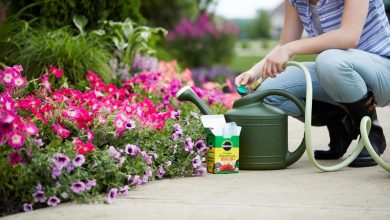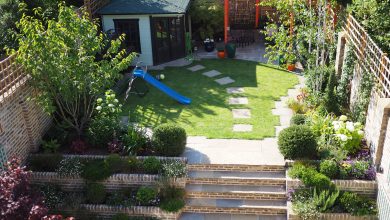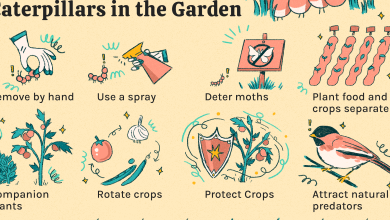How to make a low maintenance sustainable garden
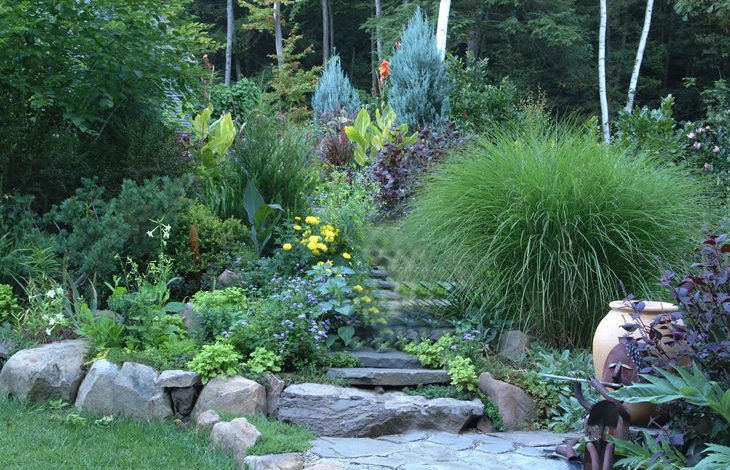
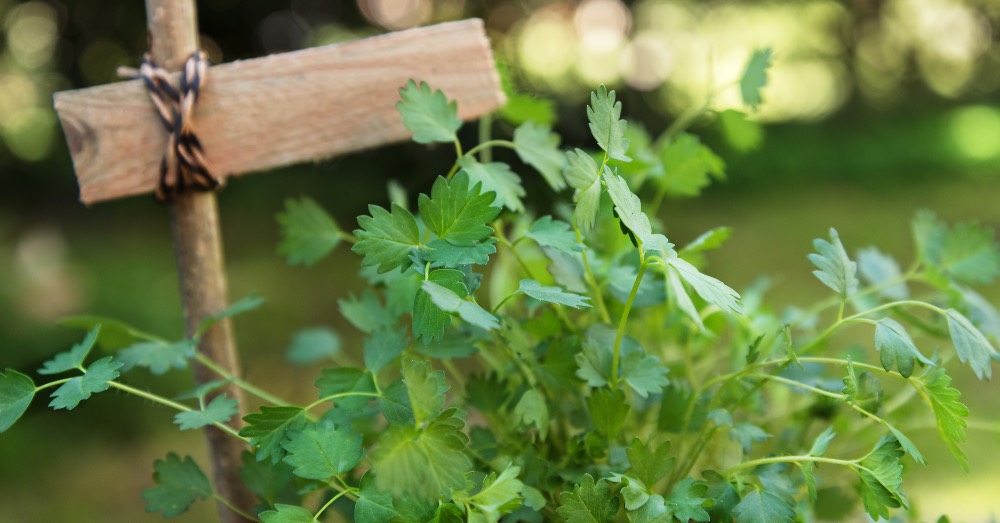
Being more respectful of our environment is not a choice: it is already a real obligation. A commitment to the environment that, for many people, translates into making a low-maintenance, sustainable garden. A term that, although a priori it may seem very complicated, is much simpler than it seems. It is enough to apply all those sustainable gestures of our day to day also in our piece of nature. We are not talking about anything extraordinary. In reality, making a sustainable garden is just opting for responsibility and, incidentally, savings.
The climate emergency is much more than just another piece of news on the news. The Planet cries out that, as its inhabitants, we commit ourselves to its care. And we are not only referring to making a rational use of water and fuel, or joining solidarity cap recycling initiatives such as the one carried out in our centers. We are also referring to committing to making a sustainable garden.
A way to enjoy a balanced ecosystem of nature that, beyond its beauty, puts its grain of sand in that much-needed care around us.
BEFORE BUILDING A SUSTAINABLE GARDEN, LET’S UNDERSTAND WHAT IT IS
But let’s go by steps. Because even before launching into a low-maintenance, sustainable garden, you need to know exactly what that entails. And it’s not something we can ignore. On the one hand because, if we are in full operation of our garden, it is essential to know what it requires in order to plan according to these needs. On the other because, if we already have our garden structured, making a low-maintenance sustainable garden can be somewhat more complicated. Let no one be upset: we can apply many of its principles to ours.
Making a sustainable garden basically involves adaptation. That of this space to the climate and the characteristics of the place where we live. We must try to have a garden as aligned as possible with the native nature of the area in which we live. And not only that: this type of garden obliges to respect any previous vegetal manifestation that existed in the space. In other words: if our future garden has a tree in a certain place, to make a sustainable book garden we will have to leave it where it is. The idea is that we adapt to nature and not the other way around.
But it is not the only thing to contemplate to make a sustainable garden. Another fundamental detail is that maintenance generates the least possible cost. And we are not only talking about water but also about electricity or, even, regarding the use of fertilizers or insecticides.
7 ASPECTS TO MAKE A LOW MAINTENANCE SUSTAINABLE GARDEN
Understanding the concept, let’s get down to earth how to make a low maintenance sustainable garden. The best way to understand, chapter by chapter, what steps we have to take in the design of ours. A decision, to bet on this type of garden, which is not at odds with beauty. A sustainable garden does not have to be beautiful or eye-catching. Actually, one of its main attractions is that it retains a wild and rustic touch that fits in with the landscape of the area in which it is located.
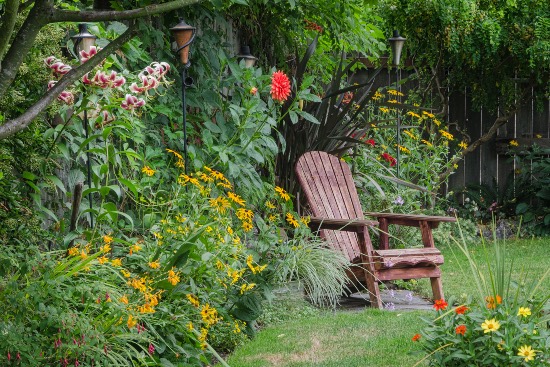
For that and before more, there is something important that we have to do. And it is nothing more than knowing in depth the characteristics of the space. When making a sustainable garden we have to have perfectly controlled flows of sun, shade and wind in the space. And we are not referring, only, to those of a natural nature. If our garden has trees or previous constructions, such as a pergola or a gazebo, we have to consider how they affect the whole. This point is decisive to decide how and where to plant. And, even, it is to decide where the specific areas that we mark will be, such as the living area.
And no: it is not complicated to make a low-maintenance sustainable garden. Actually, achieving it only happens by following the following steps and adapting them to our own space.
1. Respect the natural form, key when making a sustainable garden
Let’s remember: the idea is to mold our garden to the space and not the other way around. Therefore, the ideal when making a sustainable garden is to fully respect its orography. If we have uneven areas, take advantage of them to plant creeping plants. If we have elevated areas, try to turn them into rockery. Here creativity does not arise from our imagination but from the space itself.
And, if they exist, don’t fight with the shadow areas. Having areas of the garden where the sun does not shine does not have to be a problem. On the one hand, because we can always bet on plants that need this type of location. On the other, because these areas are perfect for avoiding the evaporation of irrigation water.
2. Bet on native plants
The great virtue of native plants is that they are already acclimatized. And even, in certain areas of our country, they are plants with a low demand for water and accustomed to drought. It is also accepted to use non-native plants that, despite coming from another place, share the same needs as those that are.
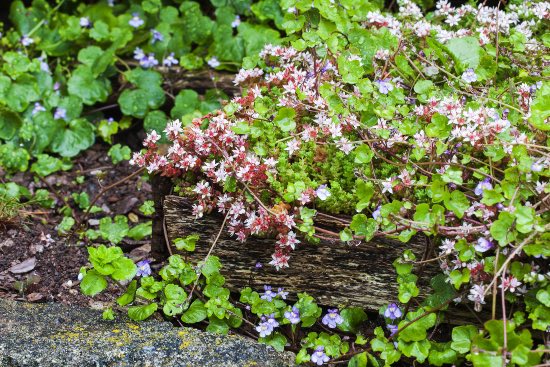
And one more detail regarding our choice of outdoor plants. If they can survive solely on rainwater, all the better.
3. Relegate the lawn to the background
It is, perhaps, one of the great renunciations when we consider making a low-maintenance sustainable garden. Having a mantle of grass in perfect condition involves a significant expenditure of water. And not only that: if we opt for ornamental grass seeds that are not acclimatized to our area, the irrigation needs will be even greater.
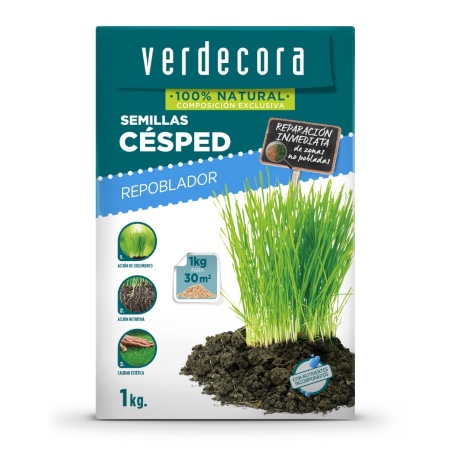
Making a sustainable garden does not mean having to say goodbye to the lawn. It actually means relegating it to the background. Or, put another way, limit the square meters of meadow giving more space to other decorative ensembles. It is a good time to consider making paths or to know how to make a rockery for the garden, since it is a perfect alternative to grass in terms of overall beauty. But in addition to this, it also does not hurt that we opt for lower maintenance grass seeds.
And, taking it to the extreme, there are many voices that bet on artificial grass as the supreme sign of sustainability.
4. Have an efficient irrigation system, another fundamental aspect when making a sustainable garden
The most precious and necessary liquid on earth is, to a large extent, the absolute protagonist of this type of garden. Making a sustainable garden seeks, fundamentally, to make a consistent and respectful use of water. And not only betting on native plants or an undemanding lawn: it also implies having efficient irrigation systems in water management. Some that allow us to keep our plants hydrated without wasting.
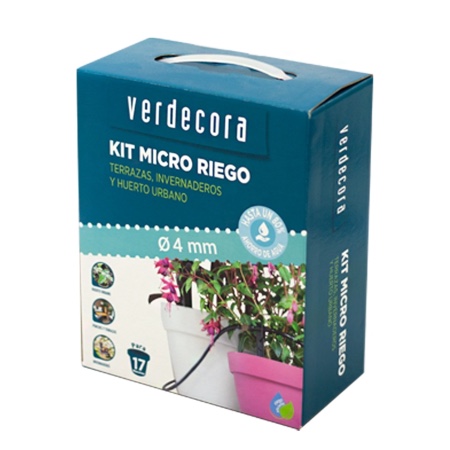
What’s more: being rigorous with what it means to make a sustainable garden, the ideal is to devise some type of system that allows recycling the extra water that we use to irrigate. And not only that: it is also more than desirable to collect rainwater, and reuse it for irrigation.
5. Choose resistant and ecological garden furniture
Another aspect that cannot go unnoticed when making a low-maintenance sustainable garden. When choosing our garden furniture, the ideal is that we opt for resistant furniture that also has the least impact on nature in the medium term. And, among all the possibilities, the forge in any of its variants is postulated as the perfect candidate. His strength causes the renewal to be postponed. And yes: avoiding buying is also a gesture of sustainability.
Beware of believing that this type of furniture is eternal and does not need us. Caring for garden furniture according to its material also applies to forging.
6. Use natural treatments for our plants
Let’s remember: making a sustainable garden seeks, fundamentally, to reduce our footprint on the Planet. And, in that attempt, trying to minimize the use of chemicals is essential. It is clear that, on many occasions, eliminating garden pests forces us to use specific formulations. But, even if it is our case, we can bet on ecological insecticides or fungicides. Some made with natural elements and that are even allowed in organic garden cultivation because they are not harmful.

It’s not the only thing we can do. It is also worth considering having a composter to recycle all vegetable waste, and give it a second life by transforming it into natural fertilizer.
7. Opt for solar powered or energy efficient lights
The last point to take into account and not the least important. Once again, saving prevails and it does so even in our garden lighting system. To be as respectful as possible, ideally choose solar lights that are powered by the sun’s energy. Something that is not always feasible, either because we live in a place with low solar incidence or because we need a higher power.
If you opt for another system, the ideal is to always opt for the LED.
Seven details to pamper when making a sustainable garden. Seven ways to take better care of our environment without giving up enjoying our little piece of nature.


